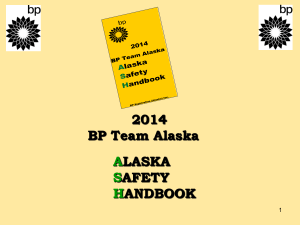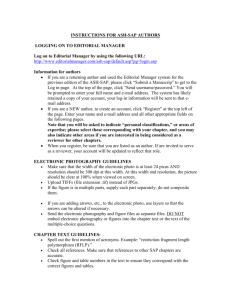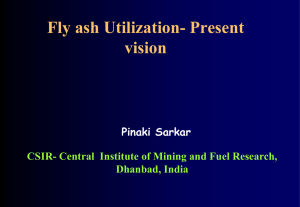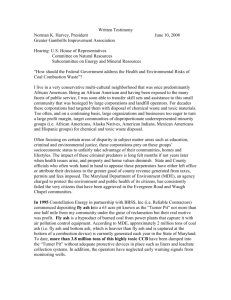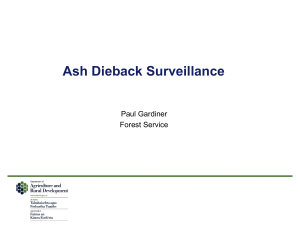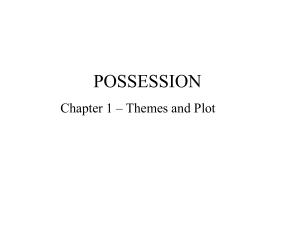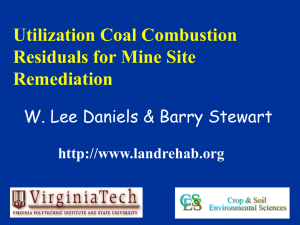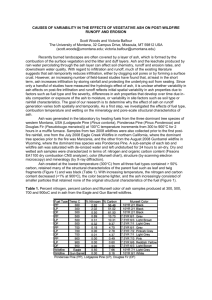4-00 PM Wed Webb Salon FG
advertisement
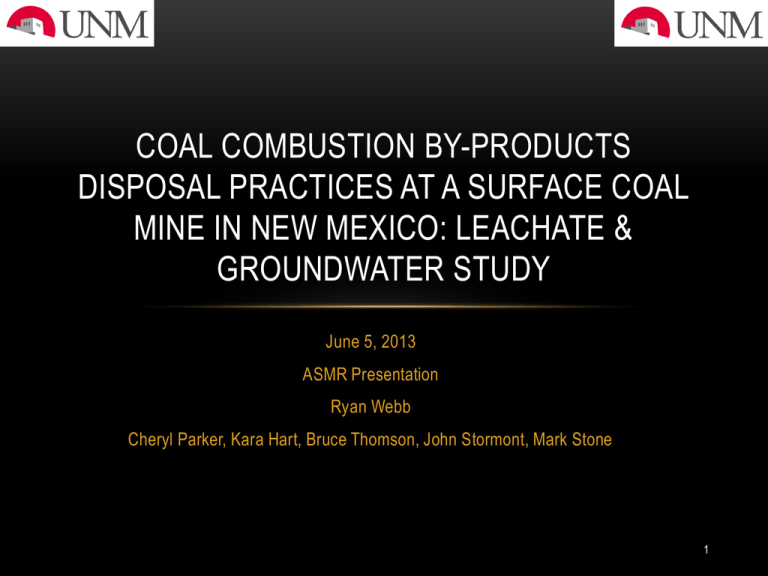
COAL COMBUSTION BY-PRODUCTS DISPOSAL PRACTICES AT A SURFACE COAL MINE IN NEW MEXICO: LEACHATE & GROUNDWATER STUDY June 5, 2013 ASMR Presentation Ryan Webb Cheryl Parker, Kara Hart, Bruce Thomson, John Stormont, Mark Stone 1 BACKGROUND • San Juan Power Generating Station/San Juan Mine (SJM) • Coal is mined from the Fruitland Formation and disposed of at this location • 2.7 million tons of CCBs disposed of in landfills each year • 70% fly ash, 20% bottom ash, 10% FGD gypsum 2 BACKGROUND 3 GOALS • What hazardous constituents are associated with CCBs and what is their potential for leaching from buried wastes? • What are the geotechnical and hydraulic properties of the CCBs and how do they affect possible infiltration of ground water through the buried waste? • What is the rate of infiltration through the disposed CCBs? • Are there identifiable geochemical processes occurring that affect leachate quality or the hydraulic properties of the buried waste? 4 OBJECTIVES • Results of leaching tests to characterize contaminant release from fresh and buried CCBs under saturated and unsaturated conditions • Summary of the physical properties of soils and CCBs that govern the unsaturated flow of water through them • Results of a one-dimensional unsaturated water flow model that estimates infiltration of water through disposed CCB materials. 5 METHODS • Physical Properties of CCBs • 1-D Model Development from Lab Results • Leach Tests • Geochemical Characterization • Column Tests 6 METHODS (PHYSICAL PROPERTIES) • Grain size distribution • Specific Gravity • Moisture Content • Density • Saturated Hydraulic Conductivity • Moisture Characteristic Curves 7 METHODS (MODELING) • HYDRUS 1D • 33 m of buried CCBs (FGD not included) • 10 years of available daily climate data 8 METHODS (LEACH TESTS) 9 METHODS (GEOCHEMICAL CHARACTERIZATION) • Scanning Electron Microscopy • X-Ray Diffraction 10 METHODS (GEOCHEMICAL CHARACTERIZATION) • Unsaturated flow columns (30 days) • No. 8 coal seam water (2 columns) & DI water (6 columns) • One pore volume per day 11 RESULTS (PHYSICAL CHARACTERISTICS) 12 RESULTS (PHYSICAL CHARACTERISTICS) Property Fly Ash Bottom Ash % finer #200 sieve (0.075 mm) % larger #200 sieve (0.075 mm) Minimum Relative Density (kg/m3) Maximum Relative Density (kg/m3) Average Specific Gravity 85.4 14.6 1007.4 1184.4 2.00 22.3 77.7 692.2 813.8 2.06 13 RESULTS (PHYSICAL CHARACTERISTICS) Material Fly Ash Fly Ash Fly Ash Bottom Ash Bottom Ash Bottom Ash Top Soil Target Dry Density (kg/m3) 1028.4 1113.3 1169.3 727.2 800.9 913.1 Actual Dry Density (kg/m3) 1024.0 1108.2 1163.0 724.4 796.9 910.4 1680.0 Sample 1 KSAT (cm/s) Sample 2 KSAT (cm/s) 7.81E-05 6.62E-05 5.45E-05 3.53E-03 2.27E-03 1.48E-03 8.45E-06 1.30E-04 8.10E-05 5.96E-05 6.45E-03 6.26E-03 3.90E-03 14 RESULTS (PHYSICAL CHARACTERISTICS) Material Fly Ash Fly Ash Fly Ash Bottom Ash Bottom Ash Bottom Ash Top Soil Pictured Cliffs Target Dry Density (kg/m3) 1028.4 1113.3 1169.3 727.2 800.9 913.1 r (cm3/cm3) 0.003 0.00 0.00 0.00 0.00 0.00 0.202 s (cm3/cm3) 0.55 0.52 0.47 0.56 0.66 0.63 0.44 α (1/cm) 3.9E-03 2.4E-03 1.1E-03 4.1E-02 4.3E-02 2.5E-02 3.23E-02 1.68 1.66 1.85 1.46 1.52 1.54 0.73 0.00 0.26 5.62E-03 0.21 n 15 RESULTS (1D MODEL) • Water flux through the top soil predicted to be virtually zero Profile Range of Calculated Point Fluxes (cm/day) FA only BA only Baseline profile -0.02 - 0.09 0.0 - 0.12 -0.03 - 0.02 Range of Calculated Water Contents (cm/cm) 0.01 - 0.33 0.01 - 0.27 0.08 - 0.32 Range of Observed Water Contents (cm/cm) 0.16 - 0.33 0.19 - 0.27 0.08 - 0.32 16 RESULTS (1D MODEL) 17 RESULTS (LEACH TESTS) • High concentrations of Al, Ba, Ca, Fe, Si, and Na • High amounts of Ba may be due to water being added for CCB transport • As concentration roughly twice as high in fly ash • Samples deeper in landfill show increasing concentration of Ba and possibly B 18 RESULTS 19 RESULTS (COLUMN TESTS) 20 RESULTS (COLUMN TESTS) 21 DISCUSSION (COLUMN TESTS) • Concentrations depend largely upon water characteristics • Expected leaching is similar to No. 8 Coal Seam Water • Column tests are HIGHLY accelerated (1 pore volume/day) • Actual flow is expected to be much less 22 RESULTS (GEOCHEMICAL ANALYSIS) • SEM – fly ash particles are small spheres of mostly Si, Al, and O • Bottom ash “rougher” particles and higher amounts of carbon 23 RESULTS (GEOCHEMICAL ANALYSIS) • Deepest cores show significant degradation 24 RESULTS (X-RAY DIFFRACTION) • Fresh bottom ash – suggests mullite and quartz are dominant • Amorphous peak less distinctive as in fly ash samples • Two peaks consistent with the presence of Calcite and Feldspar • Patterns display aging from a glassy amorphous phase to a more clay/crystalline structure 25 DISCUSSION • Column tests show highly accelerated rates and DI water is a much more aggressive leaching solution than ground water. • B, Ca, Mo, and Sr will likely follow decreasing trend quickly • Flow may be either unsaturated water or groundwater in aquifer, depending on future water table levels 26 DISCUSSION 27 CONCLUSION • No evidence of groundwater contamination from CCB disposal has been found • Element concentrations may be higher than native groundwater, although mostly of the same order of magnitude • Little to zero vertical flux through cover materials is expected • The potential for contamination of the underlying regional aquifer at the SJCM is small 28 ACKNOWLEDEMENTS • bhp Billiton • PNM • NMMMD • Advisory committee • DBS&A • Undergraduate laboratory assistance 29 QUESTIONS? 30

